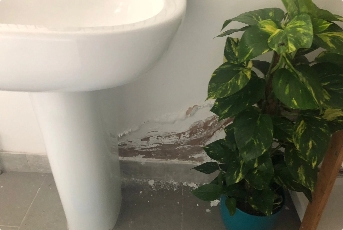Rising Damp: Identifying Signs, Causes, and Prevention Methods
There are several types of damp that attack UK properties and in this article, we take a look at rising damp, identify tell-tale signs and look at potential causes. We also focus on ways that you can prevent rising damp from damaging your home.
What is rising damp?
If the ground is wet, moisture can penetrate a building and over time, damp can rise up the walls, damaging brickwork, mortar and timber as it goes. If unnoticed, rising damp will compromise brickwork and mortar and moisture will seep into the plaster on interior walls and ceilings, causing thousands of pounds of damage.
What causes rising damp?
Every building should have a damp proof course fitted between the bricks just above ground level, which prevents rising damp. In older properties the DPC membrane can easily be damaged, which isn’t something you would notice and as time passes, damp will gradually rise up the walls.
Identifying signs of rising damp
The following are tell-tale signs that rising damp is present in your home:
- Tide marks on walls – Once rising damp takes hold of a structure, the interior walls and ceilings are often damp and there are tide marks visible. This could include damp patches, which is a sign that you need to contact London Damp Specialists and arrange for a damp survey.
- Peeling wallpaper – When damp gets into the walls, it causes wallpaper to peel away, as the adhesive becomes compromised.
- Bubbling paint – When damp attacks timber frames, it causes the paint to bubble and peel, so keep an eye out for this.
- Condensation – A damp and humid environment causes condensation to form on windows and walls, which needs to be wiped away. Good ventilation will help to dissipate condensation, you can create airflow by opening a few windows.
- Crumbling brickwork and mortar – Rising damp penetrates brickwork and mortar as it interacts with the material.
Rising damp prevention
There are things that you can do to prevent the onset of rising damp, such as:
- Heat the whole house – This will dry out the air and that will reduce the risk of damp and moisture. Do this a few times a week for a few hours per time and that will greatly reduce moisture in the home.
- Open the windows to generate airflow – This is another important step to take to reduce moisture. A few hours are enough to bring fresh air through the interior, so make a habit of doing this and you should notice the difference.
At London Damp Specialists, we pride ourselves in our high standard of workmanship and should you think you might have rising damp in your home, call us on 020 8528 3864 anytime or fill in the form on our website. We can carry out a thorough damp survey that comes with a detailed report and should there be remedial work needed, we offer an all-inclusive quote.
Be proactive with moisture penetration, as it can cause thousands of pounds worth of damage.
